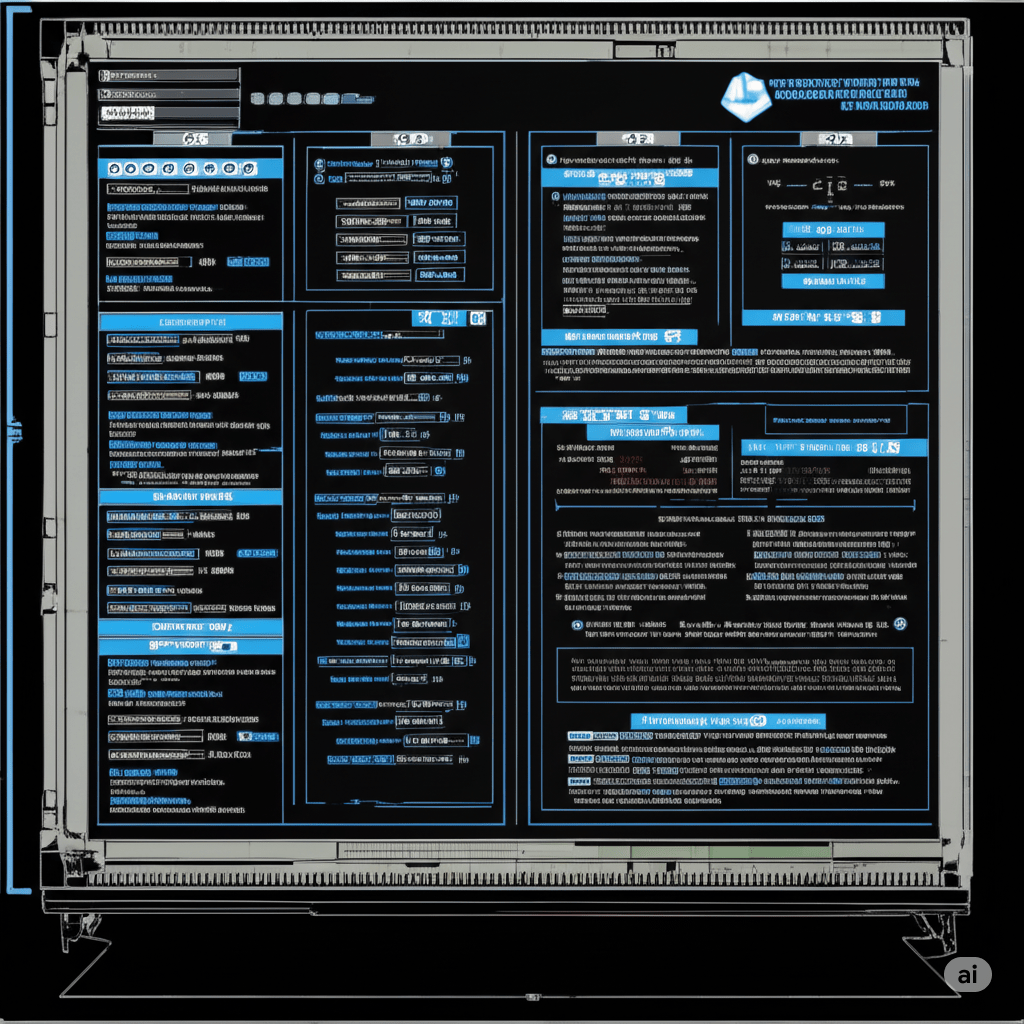In the chaotic moments after a cyberattack is discovered, the clock starts ticking. Every second that passes means more potential data loss, deeper system penetration, and escalating costs. The traditional “war room” approach, filled with stressed analysts manually sifting through mountains of logs and following paper-based playbooks, is a race against time they are destined to lose. The attackers are using automation; your defense must too. This is where AI incident response fundamentally changes the equation, turning chaos into a controlled, high-speed, and effective recovery process.
This isn’t just about faster alerts. It’s about a complete paradigm shift from manual reaction to automated resolution. An effective AI incident response system acts like a highly-trained, lightning-fast security team that works 24/7, executing perfectly coordinated actions in milliseconds. It’s the difference between manually fighting a fire with buckets of water and having an automated sprinkler system that extinguishes the blaze before it can spread. For any modern business, minimizing the impact of a cyber incident is paramount, and AI is the key to achieving the speed and scale necessary for true cyber resilience.
The Crippling Cost of a Slow Incident Response
The damage from a cyberattack is not a single event; it’s a process that continues until the threat is contained and systems are restored. The longer this process takes, the more severe the consequences. According to IBM’s “Cost of a Data Breach Report,” the average time to identify and contain a breach is a staggering 277 days, with every second contributing to the final cost. This delay is where the real damage multiplies, impacting your business in several critical ways.
The financial bleeding is immediate, with downtime costing some industries thousands of dollars per minute. But the damage goes deeper, extending to data exfiltration, intellectual property theft, and severe reputational harm that can erode customer trust for years. Regulatory fines for non-compliance with data protection laws like GDPR can add millions to the bill. A slow, manual response amplifies all of these factors. Your team is forced to make critical decisions under immense pressure, increasing the likelihood of human error. An effective AI incident response strategy directly targets this delay, compressing the entire recovery timeline from days or hours down to mere minutes.
What is AI Incident Response? From Detection to Resolution
Many security tools can detect threats, but a true AI incident response platform goes much further. It’s powered by a technology framework often referred to as SOAR: Security Orchestration, Automation, and Response. This framework integrates all your disparate security tools (firewalls, endpoint protection, SIEMs, threat intelligence feeds) into a single, intelligent command center. The AI then uses this unified view to not only detect a threat but to automatically execute a pre-defined series of actions—a “playbook”—to contain, eradicate, and recover from it.
Essentially, AI incident response acts as the brain and nervous system of your security operations. When a threat is detected, the AI doesn’t just send an alert; it enriches that alert with context, analyzes its potential impact, and initiates the appropriate response based on your established playbooks. This frees your human analysts from the repetitive, manual tasks of initial triage and containment, allowing them to focus on high-level strategic analysis and complex threat hunting. This human-machine teaming is the core of modern Cybersecurity recovery AI.
The Key Phases of an AI Incident Response Strategy
An AI-driven approach enhances every stage of the traditional incident response lifecycle, executing tasks with a speed and precision that is humanly impossible.
- Rapid Triage and Analysis: The moment an alert is triggered, the AI instantly gathers context from all integrated tools. It can identify the user, the device, the nature of the threat, and its potential severity, all within seconds.
- Automated Containment: Based on the analysis, the AI executes immediate containment actions. This could mean automatically quarantining an infected endpoint, disabling a compromised user account, or blocking a malicious IP address at the firewall. This step is crucial for stopping the threat from spreading.
- Intelligent Eradication and Recovery: The AI can then move to eradicate the threat, such as deleting malicious files or terminating rogue processes. Simultaneously, it can initiate recovery procedures, like restoring affected files from a clean backup or rebuilding a compromised machine from a golden image.
- Post-Incident Learning: After the incident is resolved, the AI incident response system provides detailed reports and analytics. This data is invaluable for understanding the attack and refining your playbooks, making your automated defenses even stronger for the future.
Case Study 1: Financial Firm Halts Ransomware Spread with AI Incident Response
A mid-sized investment firm was hit by a sophisticated ransomware variant that began to encrypt files on a shared network drive. Their legacy security system detected the malicious files, but it would have taken a human analyst crucial time to respond. However, their AI incident response platform sprang into action instantly.
The AI correlated the file encryption alerts with anomalous network activity and immediately triggered its “Ransomware Containment” playbook. In under a second, it automatically isolated the infected workstation from the network, disabled the compromised user’s network access, and blocked communication with the attacker’s command-and-control server. The AI then alerted the security team with a full report of the actions taken. Because of this machine-speed response, the ransomware was contained to a single machine, preventing a firm-wide disaster and enabling recovery in under an hour.
Top Tools Powering the Future of Cybersecurity Recovery AI
The market for SOAR and AI incident response platforms is mature, with several powerful tools leading the way.
- Palo Alto Networks Cortex XSOAR: A comprehensive security orchestration platform known for its extensive library of pre-built playbooks and integrations. It allows teams to automate responses across their entire security infrastructure, from detection to final reporting.
- Splunk SOAR: As a leader in data analytics, Splunk’s SOAR platform excels at ingesting vast amounts of security data and turning it into automated actions. It helps teams standardize their response processes and dramatically reduce dwell time for threats.
- Rapid7 InsightConnect: This platform is often highlighted for its ease of use and visual playbook builder, making security automation accessible to teams without deep coding expertise. It connects cloud, on-prem, and custom tools to automate workflows across the organization.
Case Study 2: E-commerce Platform Automates Phishing Response at Scale
A large online retailer was facing a constant barrage of phishing attacks targeting its employees. Manually investigating each potential incident, identifying affected accounts, and forcing password resets was consuming hundreds of hours for their security team. They implemented an AI incident response solution to automate the process.
Now, when an employee reports a suspicious email, it’s automatically sent to the AI platform. The AI analyzes the email’s headers, links, and attachments, and detonates any URLs in a sandbox environment. If the email is confirmed to be malicious, the AI automatically searches mail logs to find every other employee who received it, deletes the email from their inboxes, and blocks the sender’s domain. This entire workflow, which used to take hours of manual work, is now completed in under a minute, dramatically improving their Cybersecurity recovery AI posture.
Your Roadmap to Implementing an AI Incident Response System
Adopting automation doesn’t happen overnight. It’s a strategic process that builds upon a solid foundation.
Step 1: Document and Standardize Your Playbooks
You cannot automate what you haven’t defined. The first step is to document your manual incident response processes for common scenarios like phishing, malware, and compromised credentials. This forms the blueprint for your automation.
Step 2: Integrate Your Core Security Tools
Connect your primary security systems to your chosen AI incident response or SOAR platform. This typically includes your SIEM, endpoint detection and response (EDR), firewalls, and identity and access management (IAM) solutions.
Step 3: Start with Low-Risk, High-Impact Automations
Begin by automating tasks that provide high value with low risk. Good starting points include:
- Alert Enrichment: Automatically pulling threat intelligence data for suspicious IPs or file hashes.
- Investigative Queries: Automatically querying logs to find all instances of a malicious indicator.
- Notification: Automatically creating tickets and notifying the on-call analyst via Slack or email.
Step 4: Test, Measure, and Gradually Expand
Use tabletop exercises and drills to test your automated playbooks. Measure key metrics like Mean Time to Respond (MTTR) to demonstrate improvement. As your confidence grows, you can gradually introduce more active response automations, like device quarantine or account suspension. As noted by thought leaders like OpenAI on human-AI collaboration, this frees up human experts for more complex tasks.
Conclusion: Winning Back Time When It Matters Most
In the world of cybersecurity, time is the ultimate currency. An attacker only needs to be right once, but your defense needs to be right every single time—and it needs to be fast. A manual response strategy is no longer a viable defense against automated attacks. Embracing AI incident response is the most effective way to level the playing field, minimize damage, and ensure your business can withstand and rapidly recover from the inevitable cyber incident. It transforms your security team from reactive firefighters into strategic guardians, empowering them to protect the organization proactively while the AI handles the frontline battle at machine speed.
AI Insider Threat Detection to Protect Your Business
AI in Cloud Security: Protecting Your Digital Assets in the Cloud Era



